Terry hibiscus: description of varieties and cultivation features
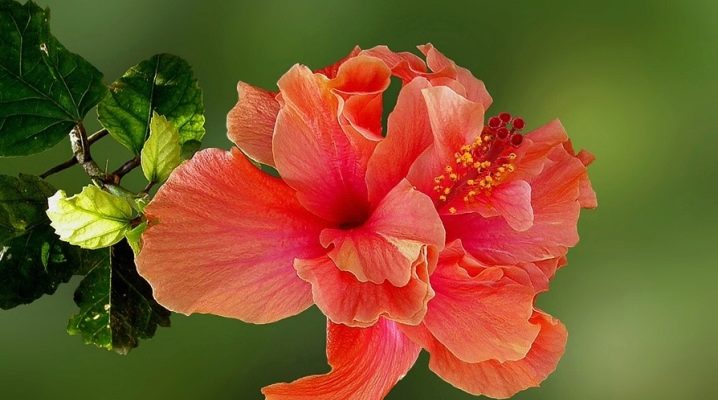
Terry hibiscus, which is very often called the Chinese rose, is one of the most common plants abroad, but it is especially loved in our country, growing at home. This plant is very much appreciated by gardeners for its decorative effect and beautiful flowering. Hibiscus can grow not only in the form of a tree, but also a shrub, and even a grass. In our article, we will take a closer look at the main varieties of this plant, learn the features of its cultivation, as well as methods of dealing with possible pests.


What is it like
Hibiscus is also called the Chinese rose. This plant is an evergreen shrub native to North China.... Today it is widespread and cultivated practically throughout the entire globe. It is hibiscus that is widely used by gardeners from all over the world as an ornamental (indoor) and greenhouse plant, which is not troublesome to care for. Moreover, it perfectly tolerates wintering.
Despite the name, This plant has nothing to do with an ordinary rose, it belongs to the order of malvaceous plants, it does not grow into a rosehip.
In the wild, it is most often found in tropical places with a humid climate, where this plant is most comfortable.
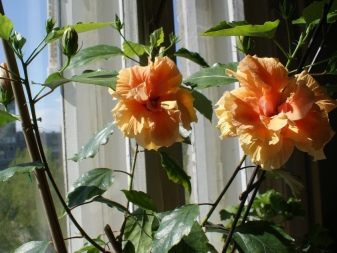
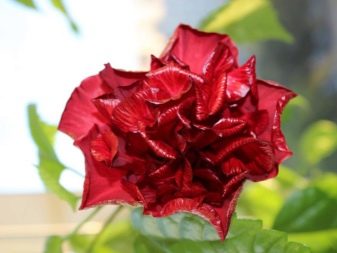
The hibiscus tree can grow up to three meters long, with an average lifespan of about 25 years. The leaves of this plant are quite large, have an original edging. The flowers themselves are also large in diameter, but it all depends on the variety, there are also quite small ones.
The color of hibiscus can be very different depending on the variety. Recently, breeding varieties are considered especially in demand, because they look unique.
The petals, as a rule, are arranged in layers, which is why the same terry effect is achieved, which looks very attractive.
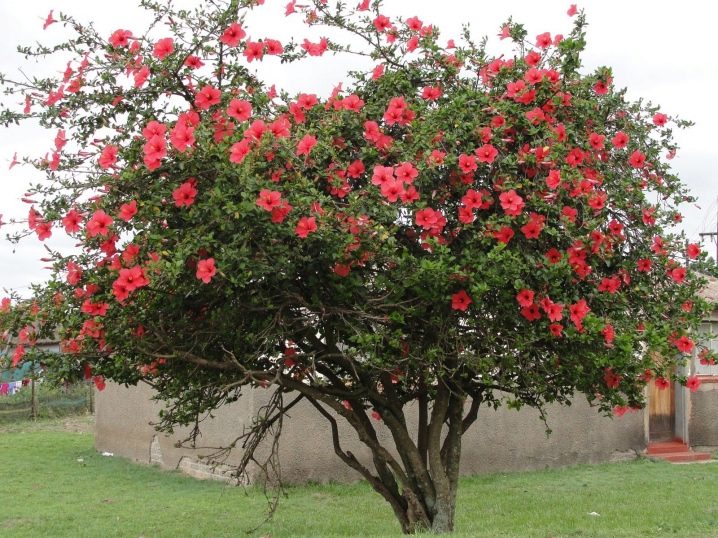
Large assortment of varieties
To date, it will not be difficult to purchase terry hibiscus seedlings, because they are offered by many private gardeners and professional nurseries with plants. Below we will consider the most popular and beautiful varieties.
- Duc De Brabant. It is considered one of the most abundant flowering hibiscus varieties. When planted in a garden, it grows from a bush into a tree on which luxurious crimson flowers flaunt. Blooms all summer long, hardy. The leaves of this variety are similar to those of chrysanthemums.
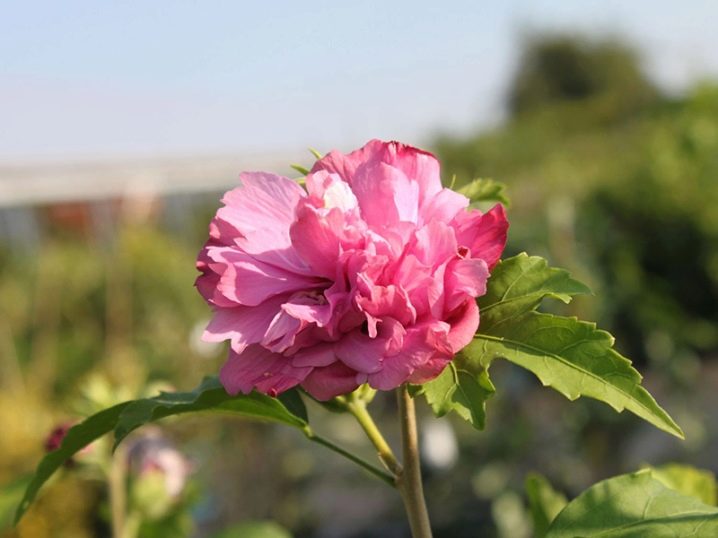
- Hibiscus with lilac double flowers and a bright raspberry center of the variety Ardens. As a rule, it grows as a bush, abundant flowering is observed from spring to early autumn.
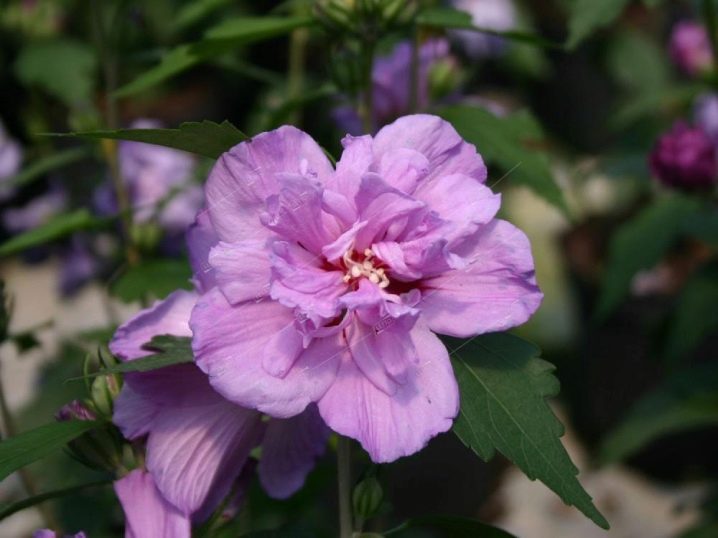
- You can buy hibiscus for planting in a pot varieties "Syrian chiffon". Its double and lush flowers look as delicate as sugar clouds. Syrian chiffon comes in three shades: white, lavender and pink.
Hibiscus "Syrian Chiffon" is a perennial plant that blooms very profusely due to the huge number of inflorescences.
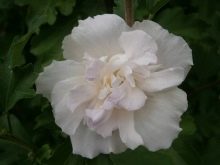
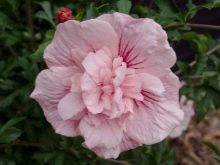

- Red Terry Hibiscus "Hamburg" looks really gorgeous. It can become a real highlight of any home greenhouse.
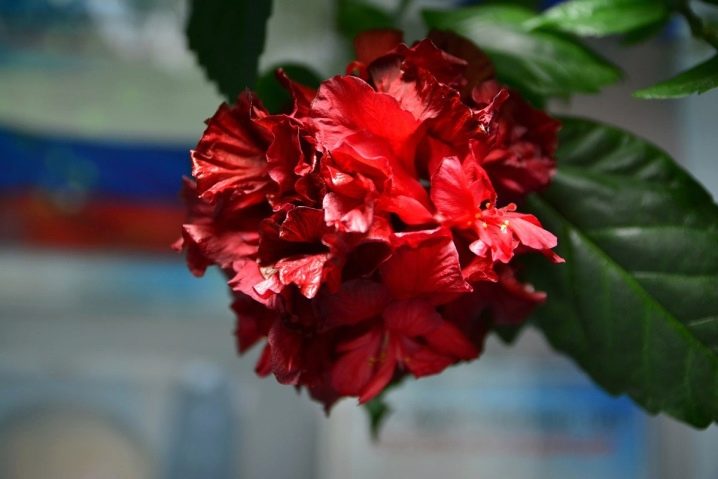
- We also recommend paying attention to the powdery pink velvet hibiscus varieties Exotic Lavender Lady. The neck of the flower is wine, and the petals themselves are of the most delicate pink shade.
It blooms very profusely, it looks neat and exotic in a pot.
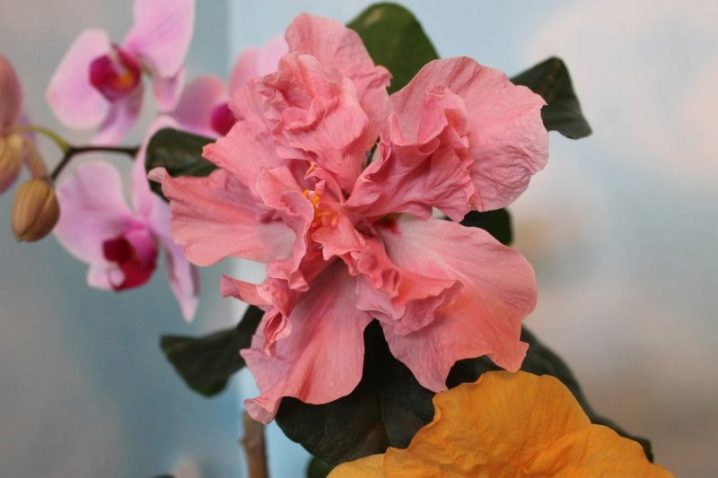
- Very rare, but at the same time truly exotic - terry hibiscus Star ovation in lemon color. Has a noticeable burgundy center. Unpretentious care.
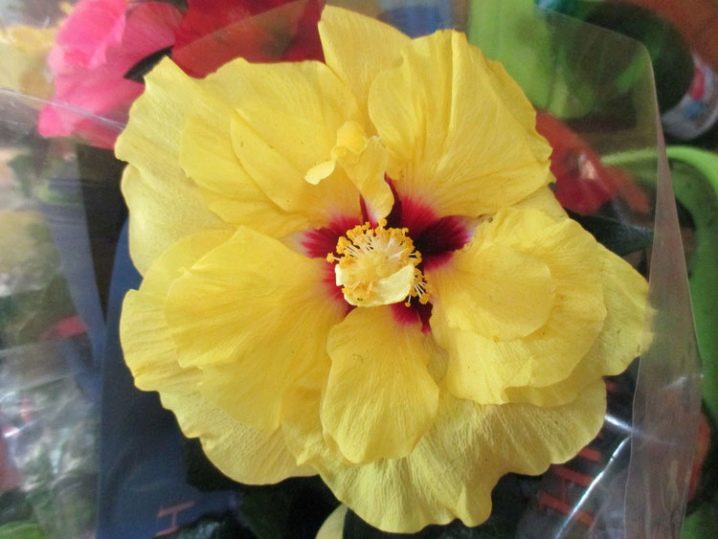
- Bright and juicy hibiscus are represented by varieties Long Red Dream and Long Orange Dream. The first is red velvet flowers and the second is bright orange.
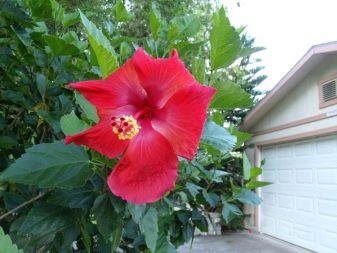
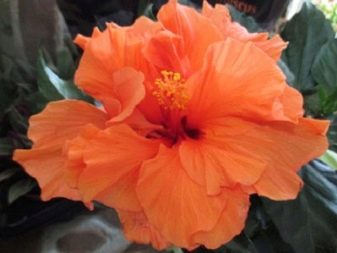
- Peach hibiscus flowers of the variety look very elegant and delicate. Golden Ball. This variety is quite difficult to acquire, but it will certainly delight the most real connoisseurs of beauty.
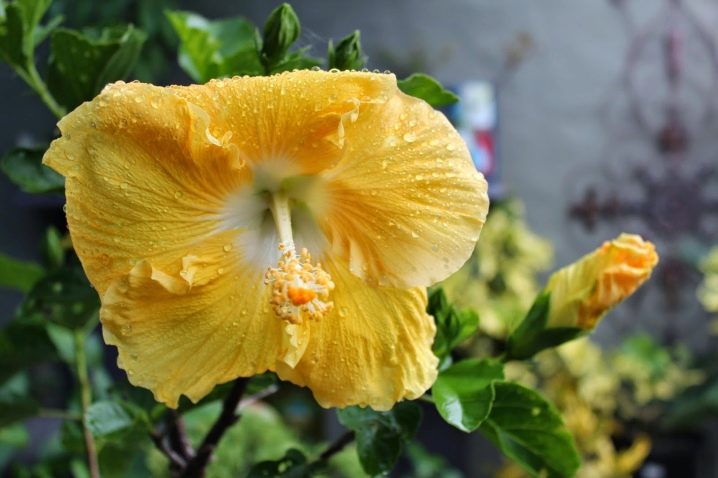
- Varietal hibiscus looks no less advantageous. Dream world in a pale pink shade with white edging.
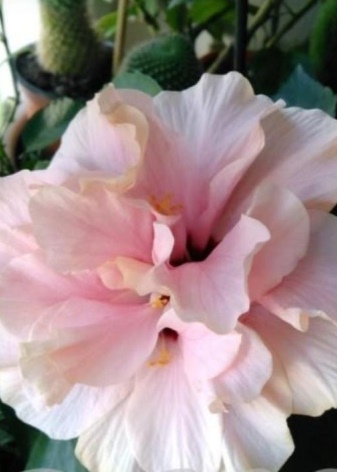
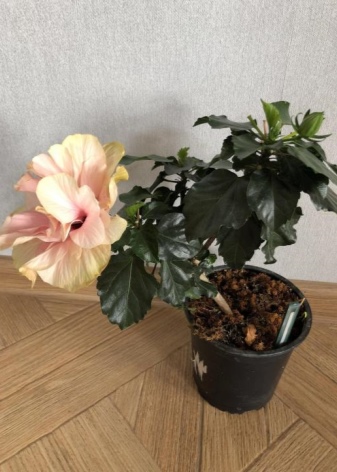
- One of the rarest and most elegant hibiscus is considered to be in a juicy burgundy-white color. Cherry Ice. Such a terry handsome man is worth several times more than the usual and common varieties.
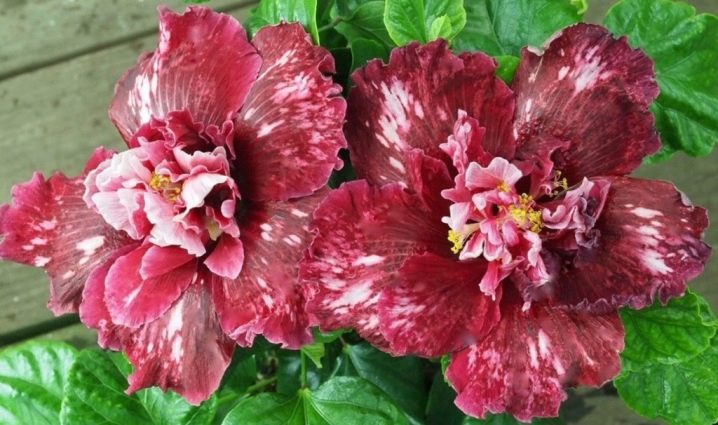
- But connoisseurs of real terry luxury should definitely pay attention to varietal hibiscus Cocoa royal in a brown-orange color, which just bears the name royal, because another would simply not suit him.
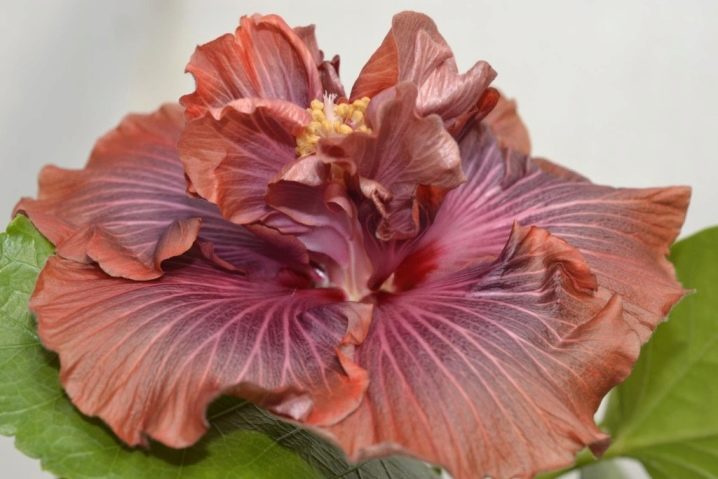
- Hibiscus is considered one of the most worthy breeding novelties. Tahitian star queen nebula... This hibiscus looks very expensive, its flower seems to be shrouded in a haze of several shades, creating a single picture, from which it is simply impossible to take your eyes off. Terry violet-pink leaves beckon to touch themselves.
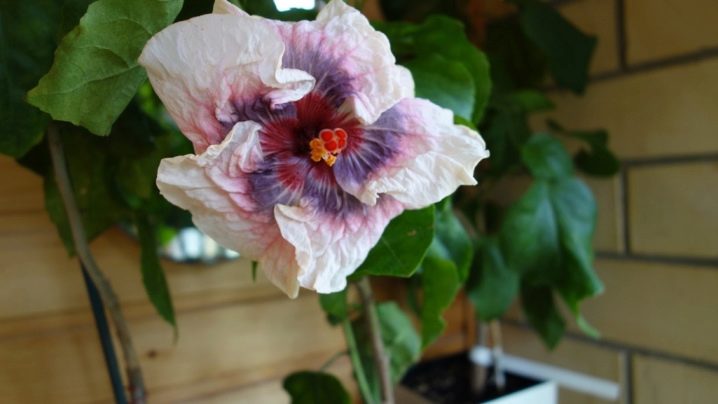
We also recommend paying attention to the following varieties of terry hibiscus, which can interest potential lovers of unusual flowers. Most of the varieties are Taiwanese and selective, however, they take root in our country without unnecessary problems:
- Passion;
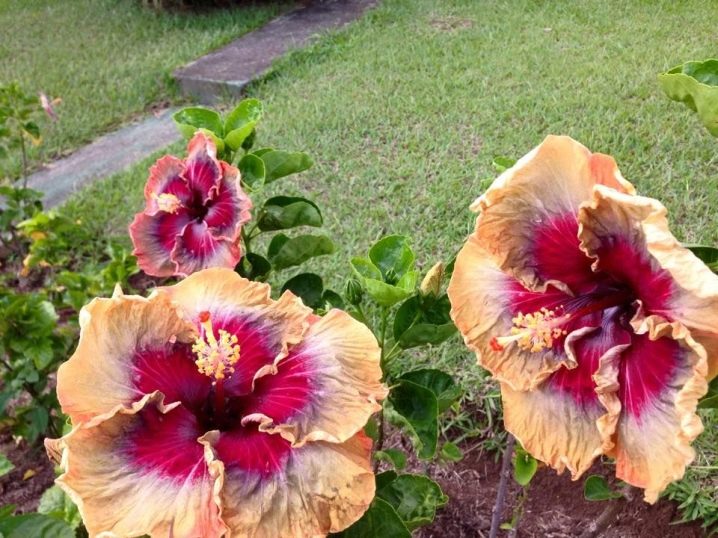
- Chis Endless Passion;
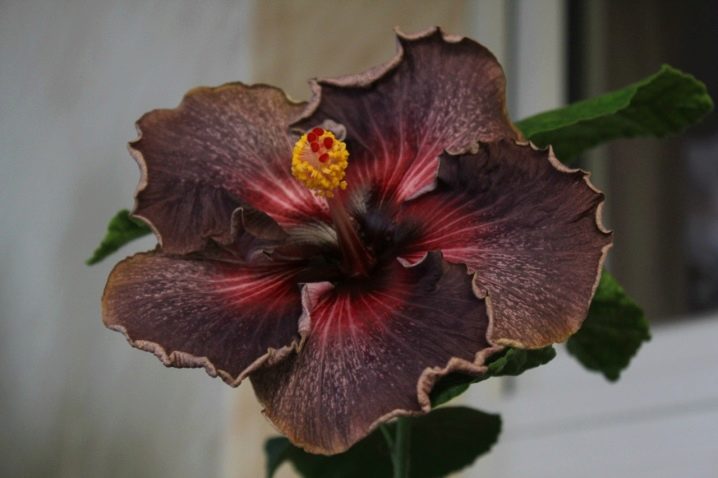
- Dream about Thaity;

- Bohemian Rhapsody;
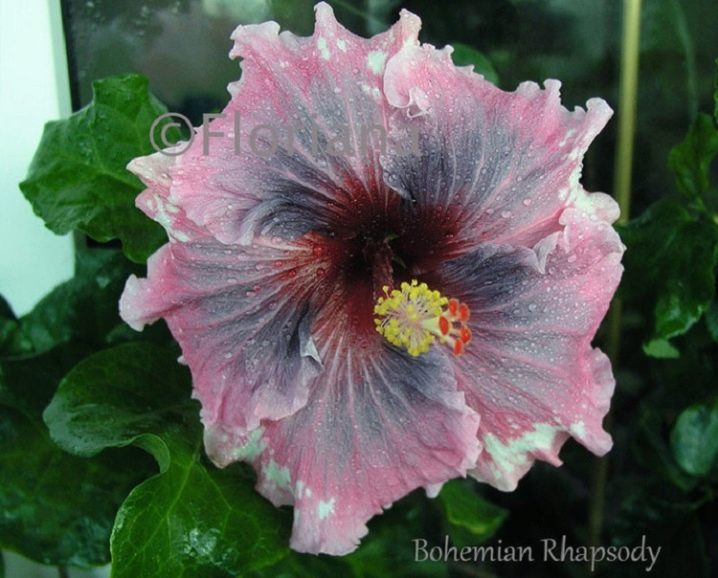
- Fiery Furnace;
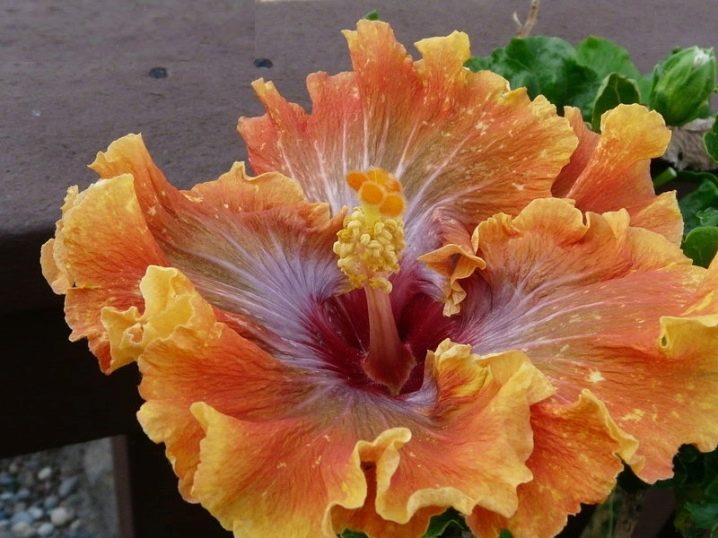
- Tigerama;
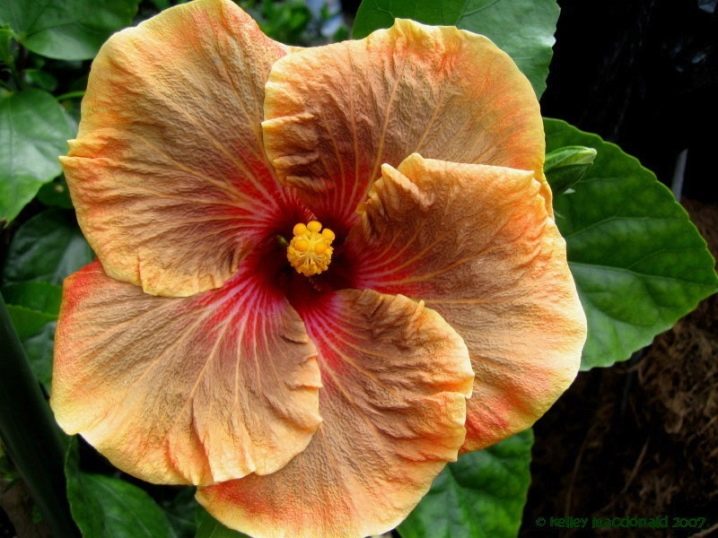
- Moorea Solar Blue;
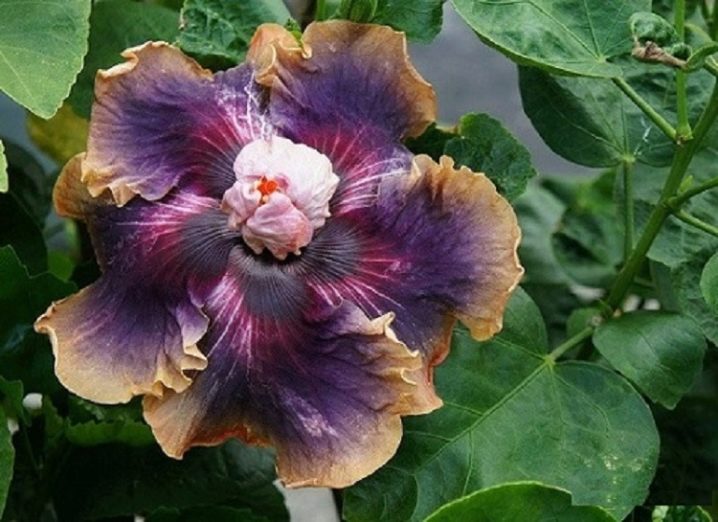
- Taiwan night rose;
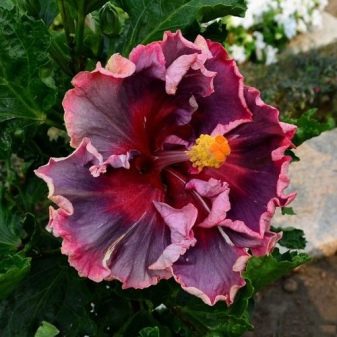
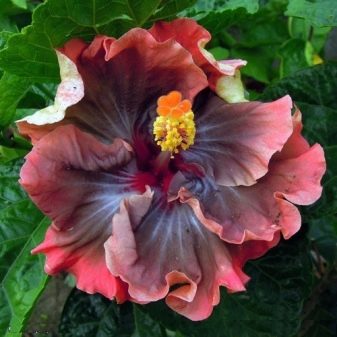
- Silver Runway;

- Meteor Falls;

- Iota;

- Gator Magic.

Of course, most of the outlandish varieties are selective and exotic, especially mixed varieties of varieties, and therefore it is difficult to get them on the general sale. Nevertheless, they are worth hunting for them, because no one will have such beauty.
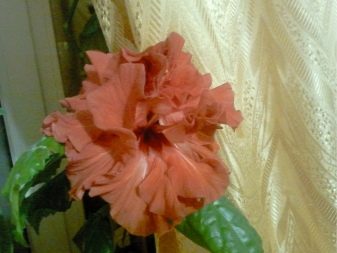
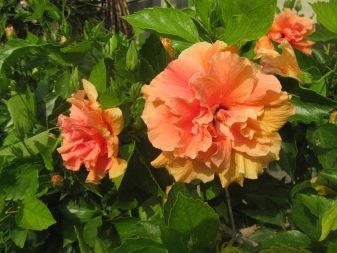
A little about leaving
In order for the hibiscus to live the allotted time, and also to please with abundant flowering, it must be properly looked after. It is not difficult to do this, the main thing is systematic, knowing the basic rules.
- If hibiscus grows in a house or apartment, in the summer season the temperature in the room with the plant should be no more than 23 degrees, while in winter the temperature regime should be maintained in the range of 16-18 degrees. At a temperature of 10-12 degrees, there is a risk that the hibiscus will shed its leaves, and it will hurt for some time.
- Hibiscus is considered a tropical plant, and therefore it loves moisture very much. Watering your hibiscus at home or in your yard should be regular. In the summer, it should be watered twice a day, and in the fall and winter - once. Water for irrigation should be at room temperature. Also, the plant is very fond of showering and spraying from a spray bottle.
- Even if the plant grows in the house, but in the summer there is an opportunity to take it out into the fresh air, this will be very useful for him, since hibiscus loves diffused lighting very much.
- For planting hibiscus, it is very important to select the soil. It must be breathable. You can buy ready-made soil or take it from the garden, if we are talking about a private house. However, coniferous soil, peat and sand must be present in the soil. You should be careful with fertilizers and top dressing, especially with house manure, with which potential pests can get to the plant. The best and safest way is to purchase ready-made soil with all the necessary components inside.
- Hibiscus pruning is best done in the spring, before the plant begins its active growth phase. Pruning should be done as neatly as possible and the pruning shears should be sharp. The stems should be trimmed at an angle or directly above the lateral shoot. It is best to sprinkle the cut ends with charcoal, but if it is not at hand, then you can use dry cinnamon.
- Depending on the variety, hibiscus can be of different heights. This must be taken into account in advance when choosing a container for a plant.
- During the flowering phase, hibiscus should be fed with a ready-made complex fertilizer for flowering plants. It is advisable to do this once a week in the morning or in the evening.
- Young hibiscus should be transplanted into a larger container each spring.And for an adult plant, one transplant is enough every three years.
In winter, it is important for the plant to provide the correct temperature regime, rest and infrequent watering.

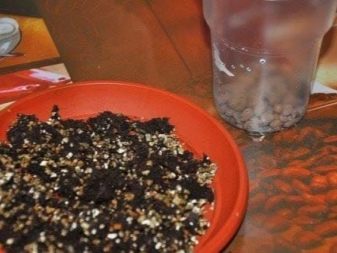
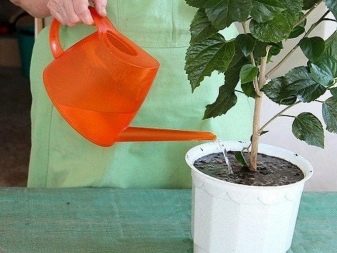
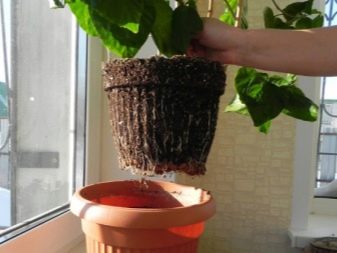
How to propagate and plant
Hibiscus practically does not reproduce by seeds, and if it turns out to be done, then the plant comes out very weak. That is why gardeners use a proven method - vegetative.
- To plant the plant, shoots from the top of the hibiscus are used. They must have a kidney, preferably several.
- After cutting, the cuttings can be treated with a special growth stimulant. So the plant will take root faster. After that, the hibiscus can be planted immediately in the prepared soil. If the stalk is very small, then you can first put it in a glass of water. There should be very little water in the glass, it should be changed every 2-3 days until the plant has small roots.
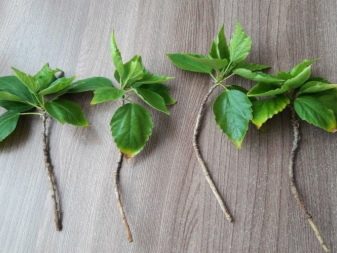
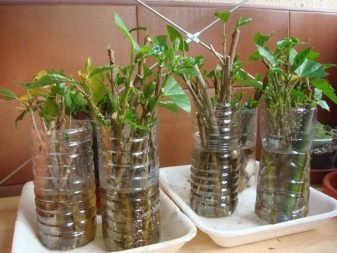
If planting the cutting is immediately carried out in the substrate, then pay attention to the following recommendations.
- The soil must first be moistened. The seedling should be deepened to a depth of no more than one centimeter, and so that the branches do not fall, the soil can be slightly pressed down.
- Then the seedling should be covered with a film or a regular plastic bag. It is important to leave some air for him, otherwise he will die. It needs to be sprayed daily with a spray bottle.
- For the fastest rooting, the room temperature should be no more than 23-25 degrees.
- After a few days, rooting will occur - then the plant must be transplanted into a separate glass. There it must grow until it gets stronger. It needs to be moisturized regularly.
When small roots can be seen all over the glass, the plant can be transplanted into a separate container.
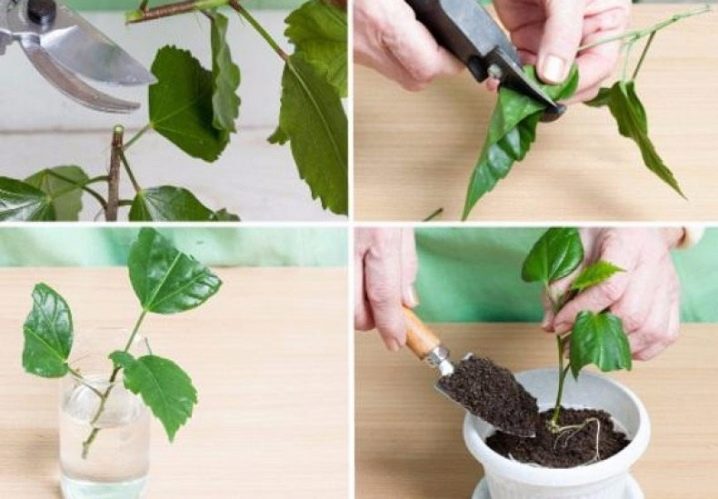
Potential diseases and pests
The following pests most often attack hibiscus.
- Aphid. As a rule, it flies from neighboring infested flowers.
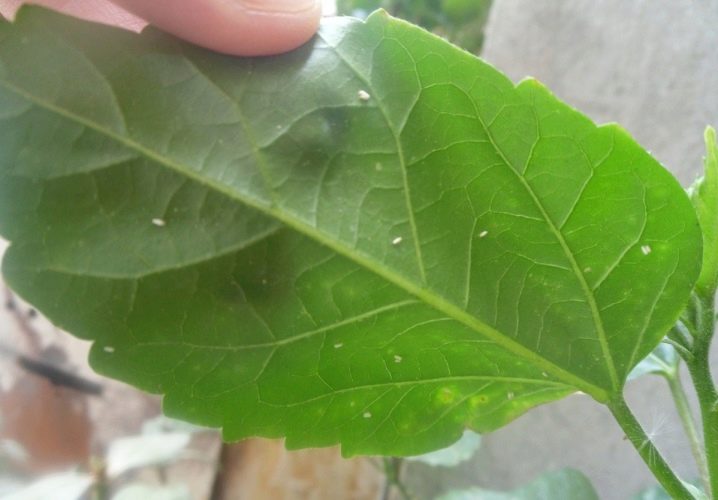
- Whitefly. A tiny insect that spoils plants mainly in the warm season.
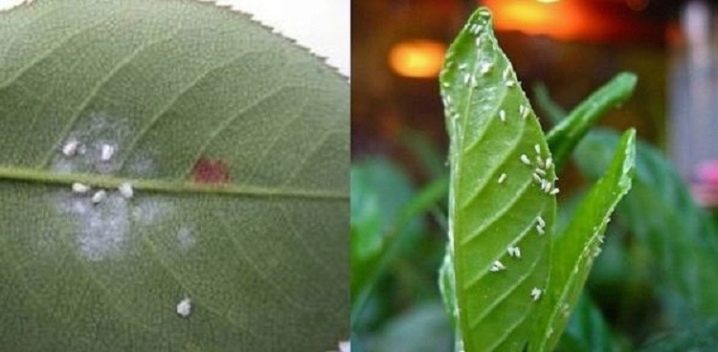
- Spider mite. It can get on the plant in any way, even from an open window. When parasitizing on leaves, it leads to their death. For prevention, you should spray the plants and regularly ventilate the room.
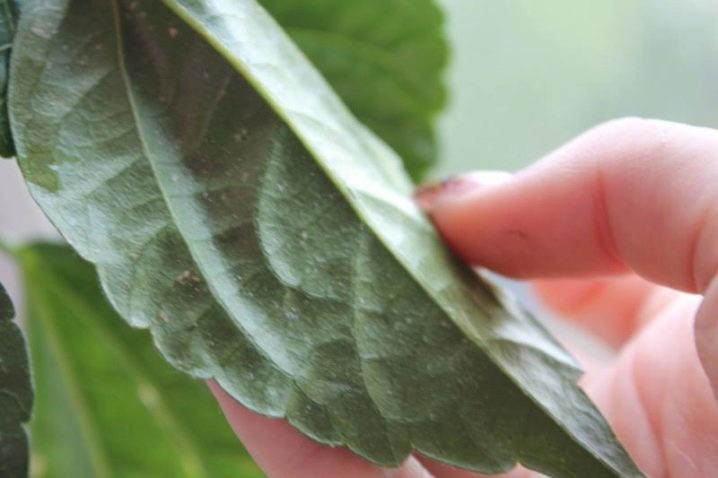
To combat these pests, you can use special insecticides that can be purchased at a gardening store, or folk remedies like decoctions. The most proven and safest insecticides include:
- "Actellik" (suitable for a whole range of pests);
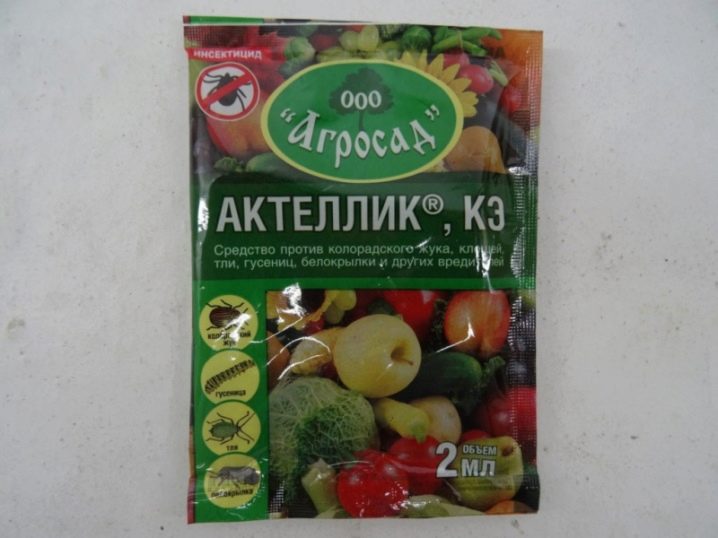
- Biotlin (copes well with aphids and whiteflies from the first application);
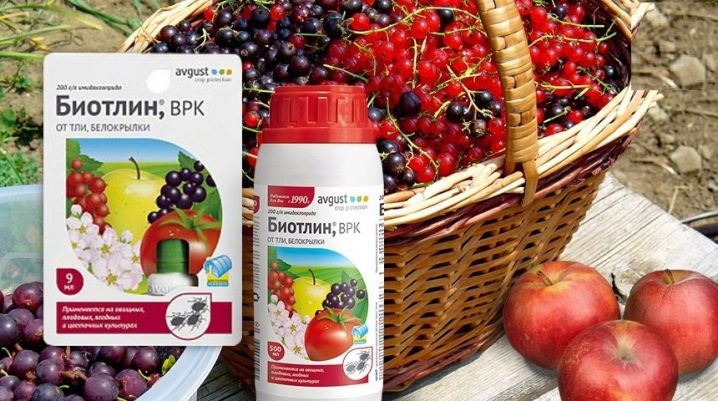
- Fitoverm (this drug is especially good for thrips and spider mites).
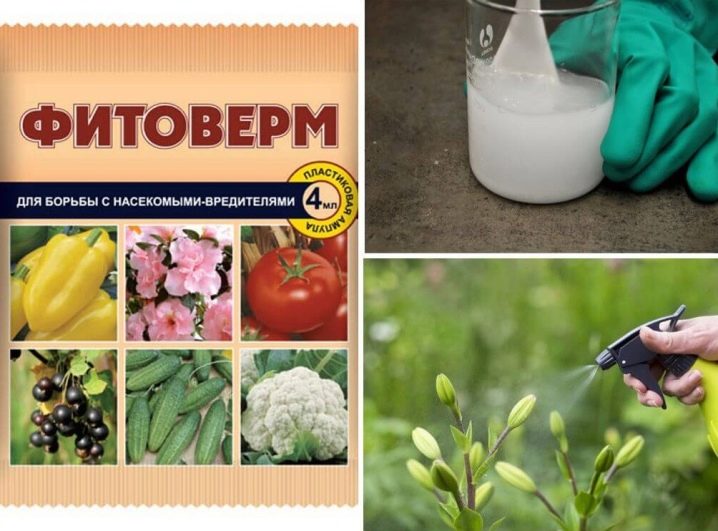
Chlorosis is a disease that can interfere with the normal growth and development of hibiscus. As a rule, it is not difficult to recognize it. With this disease, the leaves constantly fall off, and the new ones immediately turn yellow. You can help the plant recover with the help of dressings and mineral fertilizers in the composition with iron and nitrogen.
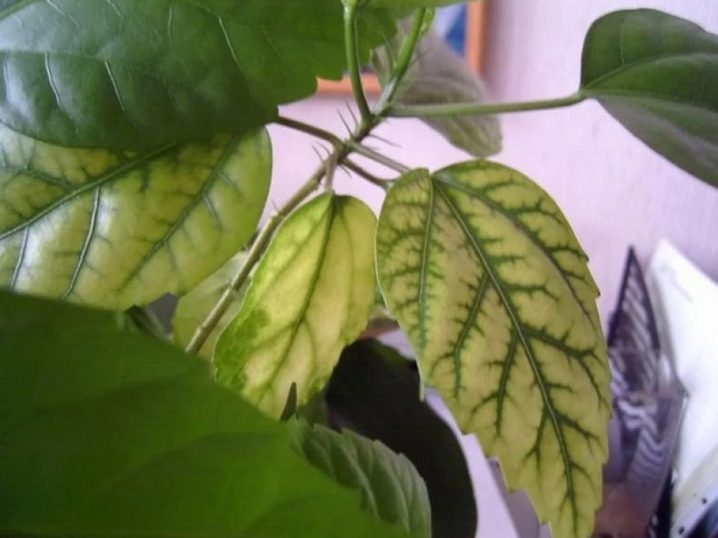
As folk remedies for the destruction of diseases and pests can be used solutions with wood ash or laundry soap.
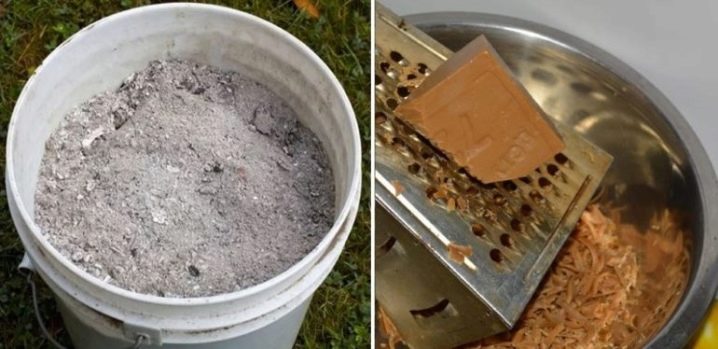
See the following video for the secrets of propagating hibiscus by cuttings.






























The comment was sent successfully.